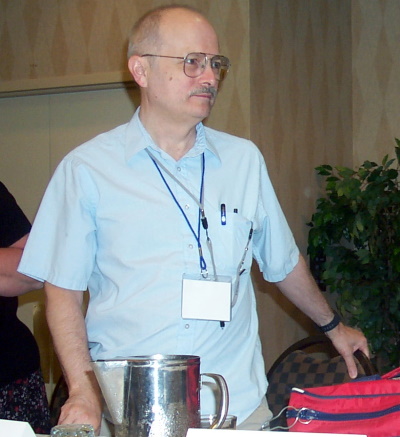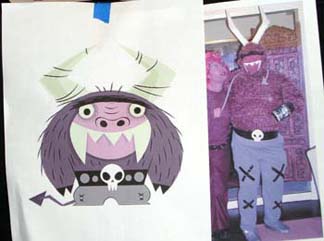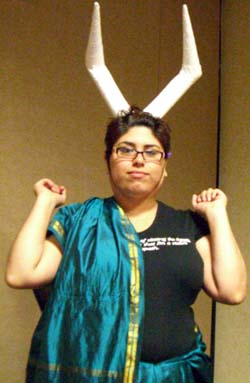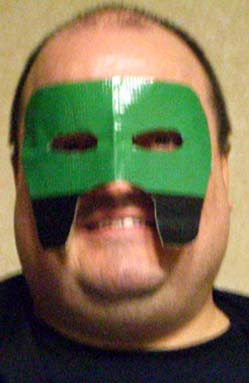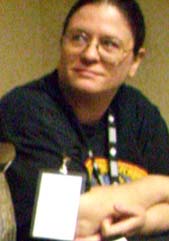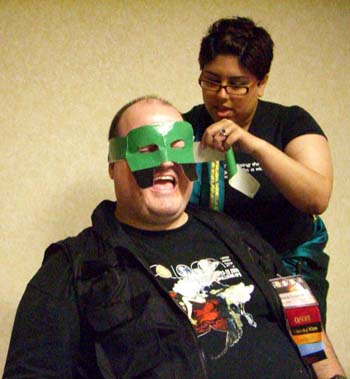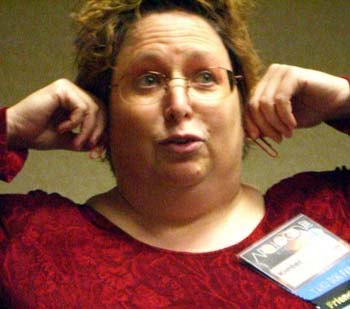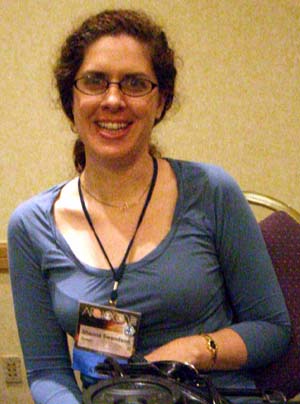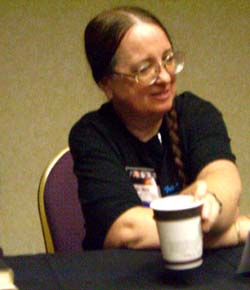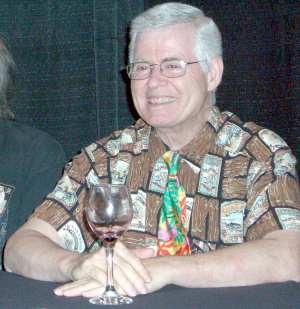11 members of the FACT reading group attended the discussion of Vernor Vinge's "Rainbows End" on June 19, 2007. One reader emailed their comments. All but 1 member have read Vernor Vinge before. Everybody started the book. All but 2 people finished it, and the rest were planning to finish.
Overall people thought it was a multilayered book, even though (to quote one reader) when you read it it does not feel like a book with layers. The majority of the group felt the story was entertaining. However, everyone seems to have taken something different away from it.
Some people did not think that the technology portrayed in the book brought up any unique concepts, but others were impressed how convincingly Vernor Vinge extrapolated from existing technological trends. One reader said he had just read in the news that Google and Linden Labs are collaborating on "something like that" (he didn't clarify). Several readers noted that the technologies Vinge describes seemed familiar to them from Vinge's earlier novel "Deepness in the Sky". The ubiquitous nodes that store information about the physical world around them, are a milder version of localizer dust; the You-Gotta-Believe-Me technology is a milder version of Focus.
A fun read or food for thought?
Some people thought "Rainbows End" was mostly a spy / mystery thriller, a fun read without a significant science-fictional aspect; on the contrary, a minority said it was an intellectually worthwhile book to read, but the story did not "pull them along". Of those who were hooked by the story, several complained that the plot hit a major snag at the library battle scene. The battle, which draws out over a hundred pages or more, snarls the flow of the story, more so because the particulars of it aren't really important to the plot. To be fair, one reader loved the library battle scene. He felt as if watching a group of inhabitants of the World Of Warcraft universe battle the inhabitants of the Discworld universe for supremacy of their environment.
Yet other group members said the book was both a pleasure to read and provided food for thought.
Those readers noted that the book attempts to describe what it's like to be in the bend of the technological progress curve going off into the Singularity, and debated whether Vernor Vinge was more successful at it than Charles Stross in "Accelerando". Regardless, a few readers acknowledged that the author did an impressive job of showing the coming of the Singularity from the inside, so transparently you don't even understand how it happens. He showed it from several perspectives: there were kids in the book who have really mastered the "wearing" (a catch-all term for using the augmented reality technologies via devices built into the clothing and contact lenses); there were kids who were struggling with it; and then there were the "retreads" -- people who grew up in the pre-wearing era, and who needed to be taught this from scratch; there were even people who rebelled against the augmented reality, like the guy who, instead of wearing his computers, carried a laptop.
An "Alice in Wonderland"-like tour of the future
To make the "brave new world" comprehensible to us, the author had to show it through the eyes of one of our contemporaries, which explains the choice of the viewpoint character as Robert Gu, a retread. The readers observed that if Vinge chose a point of view character who was "native" to the new technologies, we wouldn't understand at all what was happening in the story. To quote a reader, Robert Gu was an equivalent of a shipwrecked English sailor in the medieval Japan.
This leads us to the question of what the Rabbit was. Even though it's not clear from the book (beyond some educated guesses), what kind of entity the Rabbit is, a reader observed that Rabbit's role is essentially that of the White Rabbit from "Alice in Wonderland". He further said "Rainbows End" is essentially an "Alice in Wonderland" kind of story, the Wonderland in this case being the high-tech future Robert Gu is touring. Hence Gu is kind of an Alice. (Not to be confused with a "Rainbows End" character named Alice. One of the more mysterious characters in the novel, she left some readers wanting more. They thought that for the importance of the role she played, the author should have told us more about her.)
The protagonist is a jerk, but he's often right
Speaking of characterization, though this group considers it be one of Vernor Vinge's lesser strengths, most people thought that Vinge did a good job with Robert Gu. They found Gu's character growth convincing. Myself, not so much. I wasn't impressed with Robert Gu's transformation from a world class jerk to a caring person, since it seemed externally, not internally motivated. His Alzheimer's treatment gave him a whole new personality, taking away his ability to see deeply into people and push their buttons, so he wasn't able to hurt people as well as he used to. That's not to say that Robert Gu is not an interesting character. He really is. The scene where he lashes out against Miri sheds lights on the complexities of his personality. Even though his delight in hurting Miri is despicable, his put-down of her has a ring of truth to it. It is true that she doesn't understand what the world was like before the augmented reality, and she doesn't understand what it's like to read books in their original, bare, unenhanced state, using only your imagination to experience the story fully. Miri is used to virtual reality doing that job for her, getting her into a story: a job that used to be done by the human mind alone. People who grew up without knowing how to use their imagination to enrich their experience seem retarded to Robert, and so does Miri. Despite his arrogance, it's hard not to agree he has a point, and that he has a right to feel offended by her simple-minded encouragement to embrace the augmented reality.
The political aspect of the book
One reader said all these things discussed so far were irrelevant to what Vinge wanted to do. The reader thought "Rainbows End" was one of the best political novels written of late, relevant to our current time when the country's administration doesn't live in reality-based world. He liked that Vinge did not take a stance on whether the high-tech world he described was utopia or dystopia. It can be either, since the ubiquitous computing devices that enrich one's perception of reality can also be used for surveillance of the wearers. But the author did not push one view or the other; instead he showed good and bad implications of the whole series of things that are going on now, such as department of homeland security, or interesting unintended consequences of Alzheimer's treatment.
Another reader was intrigued with the political aspect of the book that was left hidden behind the scenes. There are hints in the book that the near future world is going to be far more dangerous and violent than what we have experienced so far. Vinge offhandedly mentions that Alice's family was from Chicago and "none of them survived". Or that the counter-terrorist measures were mostly working, because "they haven't lost a major city in almost 5 years". Apparently, minor cities were lost more often than that.
Several prominent science fiction writers had written novels that were their response to 9/11, and it may be fair to say that "Rainbows End" was Vernor Vinge's reaction to that event -- somewhat belated, but not if you keep in mind that this writer produces 1-2 novels a decade. To quote a reader, "He's been writing as fast as he could."
